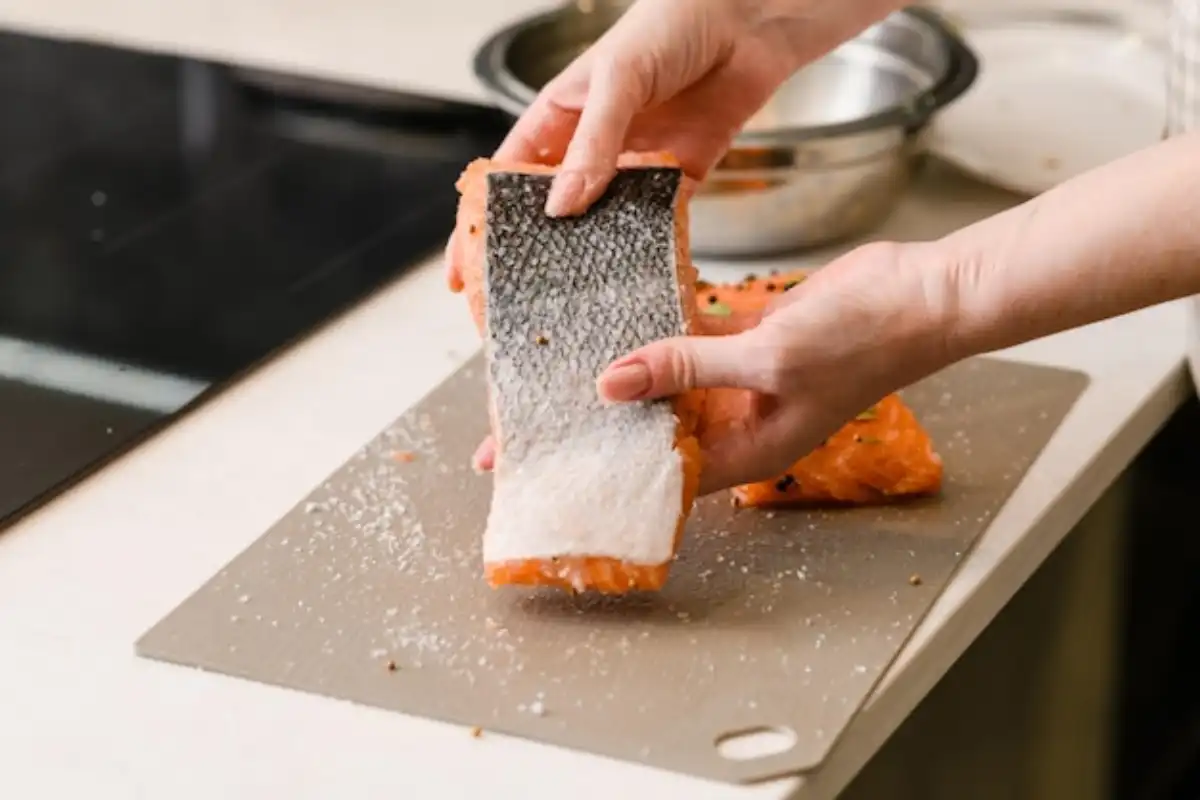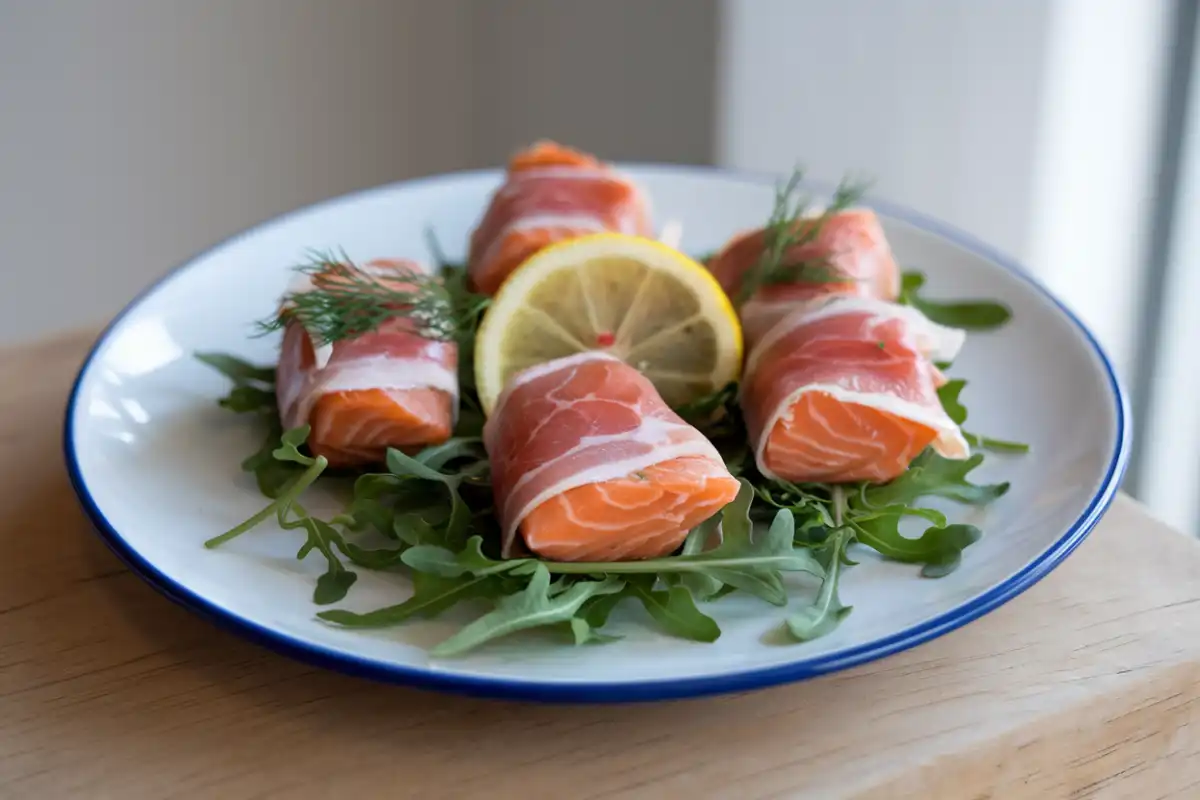Salmon is not only one of the healthiest and most versatile fish available, but it’s also incredibly delicious. You can prepare it in numerous ways, making it perfect for both main meals and bite-sized appetizers. are becoming a popular choice for gatherings, snack times, and even meal prep for a healthy diet. You can tailor these little morsels to suit a variety of tastes and dietary preferences, as they are bursting with nutrients and rich flavors.
In this article, we’ll dive deep into the world. We’ll explore the essential ingredients, provide a detailed guide on how to make them, offer various recipe variations, discuss nutritional benefits, and answer frequently asked questions. Whether you’re preparing a meal for yourself, hosting a party, or prepping snacks for the week, salmon bites are a versatile and healthy option that never fails to impress.
Introduction
Salmon bites are small, flavorful portions of salmon that are often seasoned or marinated, baked, fried, or grilled. These bite-sized treats are perfect for appetizers, snacks, or even as part of a healthy main meal. You can spice up salmon bites, serve them with various dipping sauces, or keep them simple for a light, healthy option, showcasing their versatility.
Why Choose Salmon Bites?
- Health Benefits: Salmon is a powerhouse of Omega-3 fatty acids, which are essential for heart and brain health.
- Each bite is rich in protein, which is essential for muscle growth, repair, and satiety.
- Versatile: From spicy to creamy, there are numerous ways to prepare salmon bites to suit different palates.
- Diet-Friendly: Salmon bites can easily fit into various dietary plans, such as keto, paleo, gluten-free, or low-carb.
Let’s start by looking at the basic ingredients needed to make the perfect salmon bites.
Essential Ingredients for Salmon Bites
The beauty of salmon bites lies in their simplicity. You don’t need a long list of complicated ingredients to make them taste delicious. However, depending on the flavor profile you’re going for, there are some key ingredients you should always have on hand.
1. Salmon: Fresh vs. canned
- Fresh Salmon: Always the best option if available. Opt for wild-caught salmon over farmed salmon, as it’s generally higher in nutrients and has a cleaner flavor. Fresh salmon will give your bites a superior texture and flavor.
- Canned Salmon: A more budget-friendly and convenient option. Ensure you buy boneless and skinless canned salmon to make preparation easier.
2. Binding ingredients
To ensure the salmon mixture holds together, you’ll need a binding agent:
- Eggs: The classic binding agent for most fish cakes or bites.
- Breadcrumbs: Regular, panko, or gluten-free breadcrumbs will give the salmon bites structure. For low-carb options, almond flour works well as a substitute.
3. Herbs and Seasonings
Salmon is incredibly versatile and pairs well with a variety of herbs and spices.
- Fresh dill complements the rich flavor of salmon perfectly.
- Parsley: Adds a fresh, herbaceous note.
- Lemon zest brightens the dish and balances the richness of the salmon.
- Garlic and onion powder: These give a deeper flavor profile without overpowering the salmon.
4. Optional Ingredients
Get creative with add-ins for salmon bites depending on the type:
- Cheese: For a richer, creamier bite, use cream cheese or feta.
- Spices: For a spicier kick, use chili flakes, Sriracha, or cayenne pepper.
- For added texture and nutrition, you can include chopped nuts like almonds or seeds like flax.
With these ingredients, you’re ready to move forward with your salmon bites. Let’s move on to the step-by-step guide for making them.
Making Salmon Bites: A Step-by-Step Guide

1: preparing the salmon
- If using fresh salmon, start by removing the skin and bones. Cut the fillet into small chunks. You can pulse the salmon in a food processor for a smoother texture or simply chop it finely with a knife for a chunkier texture.
- If you’re using canned salmon, drain it well and flake it with a fork.
2: Combining the Ingredients
In a large mixing bowl, add your salmon, herbs, seasonings, binding ingredients (such as eggs and breadcrumbs), and any additional ingredients you’ve chosen (like cheese or spices). Mix thoroughly until all the ingredients are well combined, but be careful not to overmix, as this can cause the bites to become dense.
3: Forming the Salmon Bites
Using your hands or a spoon, form the salmon mixture into small bite-sized balls or patties. They should be about 1-2 inches in diameter. To prevent them from falling apart during cooking, make sure they are compact.
4: Cooking the Salmon Bites
Pan-Frying Method
- Heat a tablespoon of olive oil in a large skillet over medium heat.
- Once the oil is hot, place the salmon bites in the skillet, being careful not to overcrowd them.
- Fry for 3-4 minutes on each side, until they are golden brown and cooked through.
- Transfer to a paper towel-lined plate to drain any excess oil.
Baking Method
- Preheat your oven to 375°F (190°C).
- Place the salmon bites on a baking sheet lined with parchment paper.
- Bake for 12 to 15 minutes, flipping halfway through to ensure even browning. Baking is a healthier option because it requires less oil and still produces a crisp exterior.
5: Serving the Salmon Bites
Serve the warm salmon bites with your preferred dipping sauces, such as spicy mayo, dill yogurt dip, or tartar sauce. Add some fresh herbs and a squeeze of lemon as a garnish.
Different Salmon Bites
One of the best aspects of salmon bites is their versatility. You can easily tweak the recipe to create a wide range of flavor profiles, from classic to spicy or even Asian-inspired.
1. Classic Salmon Bites
For a simple, no-frills version, stick to the essential ingredients. This variation focuses on the natural flavor of salmon, enhanced with basic seasonings like dill, parsley, and lemon zest.
2. Spicy Salmon Bites
If you’re a fan of heat, add some chili flakes or cayenne pepper to the salmon mixture. You can also include a drizzle of Sriracha or a teaspoon of hot sauce for an extra kick.
3. Creamy Salmon Bites
Add cream cheese or feta to the salmon mixture to create rich, creamy bites. This variation is perfect for serving as a more indulgent appetizer.
4. Keto and Low-Carb Salmon Bites
For those following a low-carb or keto diet, replace the breadcrumbs with almond flour or crushed pork rinds. These bites will still hold together nicely and have a fantastic texture without the added carbs.
5. Asian-Inspired Salmon Bites
Incorporate soy sauce, sesame oil, ginger, and garlic into the salmon mixture for an Asian twist. Serve with a dip made from soy sauce, honey, and sesame seeds.
Salmon Bites have nutritional benefits.
Salmon bites are not only delicious but also nutrient-rich, offering numerous health benefits.
1. Rich in Omega-3 Fatty Acids
Salmon is one of the best sources of Omega-3 fatty acids, which are essential for heart health, brain function, and reducing inflammation. Omega-3s can also improve mood and cognitive function.
2. High in Protein
Salmon is an excellent source of lean protein. Each serving of salmon bites provides a substantial amount of protein, which is crucial for muscle repair and overall body function.
3. Loaded with vitamins and minerals
Salmon is rich in vitamins such as vitamin B12, vitamin D, and selenium. These nutrients are essential for maintaining energy levels, promoting bone health, and supporting the immune system.
Nutritional Breakdown (Per 3-4 Salmon Bites)
- Calories: 150-200
- Protein: 18-22 grams
- Fat: 7-10 grams (depending on cooking method)
- 5–10 grams of carbohydrates (if you use breadcrumbs)
These bites are not only flavorful but also fit well into various healthy eating plans, including low-calorie, keto, and high-protein diets.
FAQs About
1. What can I serve with salmon bites?
Salmon bites pair well with a variety of side dishes and dipping sauces. You can serve them with fresh salads, roasted vegetables, or even over a bed of quinoa for a more filling meal. Popular dipping sauces include tartar sauce, dill yogurt dip, and spicy mayo.
2. Can you freeze salmon bites?
Yes, salmon bites freeze very well. To freeze, place the uncooked bites on a baking sheet and freeze them until solid. Then transfer them to an airtight container or freezer bag. You can cook them straight from the freezer by baking or frying.
3. How do I prevent salmon bites from falling apart?
To keep the salmon bites from crumbling, ensure you use enough binding agents, such as eggs and breadcrumbs. When shaping the bites, compact the mixture firmly and avoid over-mixing, as this can make them too soft.
4. How long do salmon bites last in the fridge?
You can store cooked salmon bites in an airtight container in the refrigerator for up to 3 days. You can reheat them in the oven or a skillet to preserve their crispness.
5. How can I make my salmon bites crispier?
To get a crispier exterior, try rolling the salmon bites in panko breadcrumbs before frying or baking. Additionally, using high heat when frying will give them a nice, crispy texture.
Drinks and Dipping Sauces
Serve salmon bites best with a refreshing drink or a flavorful dipping sauce. Here are some excellent pairings:
Beverage Pairings
- White Wine: A crisp Sauvignon Blanc or Chardonnay pairs beautifully with salmon bites.
- Sparkling Water with Lemon: For a non-alcoholic option, serve with sparkling water infused with citrus for a refreshing touch.
- Light Beer: A light, citrusy beer like a pale ale works wonderfully with the rich flavors of salmon.
Best Dipping Sauces
- Tartar Sauce: A classic, tangy accompaniment for any seafood dish.
- Sriracha Mayo: Adds a spicy kick that complements the richness of the salmon.
- Dill Yogurt Sauce: A healthy, fresh, and creamy dip made with Greek yogurt, lemon, and dill.
Conclusion:
Salmon recipes are a fantastic option whether you’re planning a healthy snack, hosting a party, or simply looking for a protein-packed appetizer. They are simple to prepare, adaptable to any diet, and abundant in essential nutrients such as omega-3 fatty acids and protein. If you’re wondering how to pick the freshest salmon for your bites, check out this helpful guide on how to choose salmon.
The versatility of salmon bites allows you to experiment with different flavors and cooking methods, ensuring there’s always something new to try. Whether you prefer them baked or fried, classic or spicy, salmon bites are sure to become a staple in your kitchen. And if you’re looking for more delicious ideas, don’t forget to check out this best cheesecake recipe guide for a sweet finish to your meal.
Don’t hesitate to experiment with these delicious salmon bites for your next meal or gathering. Serve them with your favorite dip, pair them with a crisp beverage, and enjoy the unbeatable combination of taste, nutrition, and simplicity.
